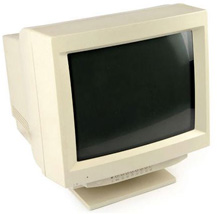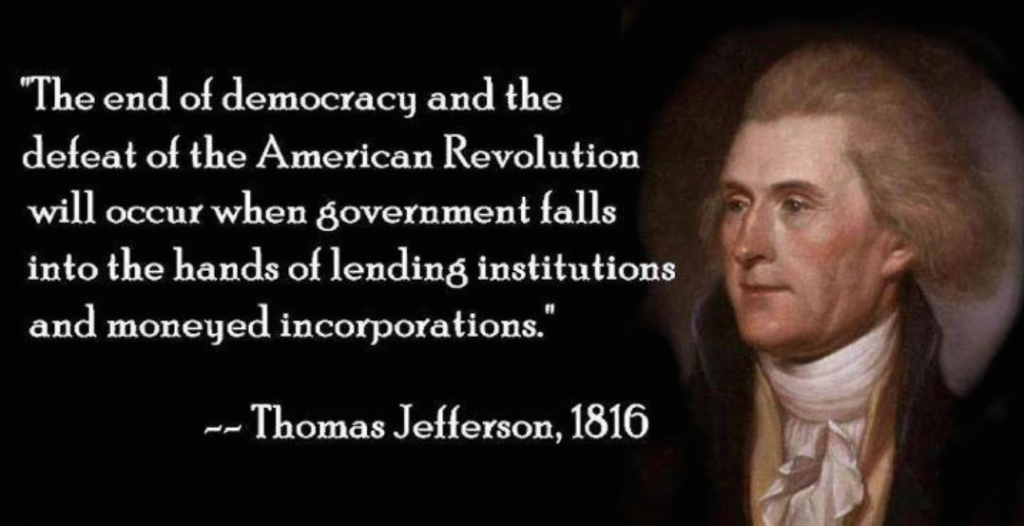
This post is out of the ordinary for my author website, not only because it is primarily a guest post, but also because it is political in nature. If that bothers you, it’s probably a good idea to skip this one, but I don’t feel it’s inappropriate to post this material here. My writing to date — including, but not limited to, my books — has been primarily nonfiction and informative in nature. I have not kept my political views entirely out of it, but that part has been low-key.
However, I do believe strongly that published writers have the power to at least open, if not sway, people’s minds, and an equal amount of responsibility that comes with that power.
Today, I’m exercising both, because I am deeply concerned about the future of my beloved country, under a ruler (I cannot refer to him as a leader. Real leadership — in my mind — is not just bold, but noble. “Bully In Chief” is a more accurate descriptor) whose lack of experience, competence and, indeed, proper temperament to hold the highest office in the world, beggars belief.
What I’m sharing here is not a divisive screed against the man who will take office tomorrow. There is plenty of that going around, only adding to people’s angst and, yes, grief. Instead, I’m sharing—with his permission—a simple note from a father to his two daughters, who woke up the day after this past November’s election in disbelief and despair at the outcome.
It is the ONLY thing I have heard or read since the election that has made me feel one bit better, and I’m hoping it will have the same effect on those of like mind, who have been in distress.
[NOTE: I supplied the hotlinks for topics that may need more explanation for some readers. These are not Phil’s, so if you don’t like them, it’s on me.]
Phil Goldsmith is a former Philadelphia Inquirer newspaper writer, deputy mayor, bar association director, bank vice president, executive search consultant and city manager. He is a man who worked much of his career amidst the machinations of politics, but who kept his integrity and a healthy perspective.
AN OLD MAN’S VIEW
Phil Goldsmith
One of the few advantages of getting older is you gain more perspective on life. Or so they say. We older folks like to call it “wisdom.” My supposed wisdom was challenged when my daughter, Jill, emailed me in the early morning hours after Donald Trump, the 70-year-old developer with not an iota of government experience but with a surplus of misogyny, sexism, racism and nativism, was elected the 45th President of the United States, thwarting the former Senator, First Lady and Secretary of State, Hillary Clinton, from becoming the nation’s first female commander in chief.
“This is all such a colossal disaster. I am really sad and scared about all this…I don’t know how to explain to my boys how a man like him can come to be our democratically elected president in a country like this.”
She didn’t know how to explain it to her “boys” — my grandsons — and I didn’t know how to explain it to my two daughters, Jill and Michele. I didn’t want to blow it away with, “It will get better,” or, “this too will pass,” or throw oil on the fire of anxiety by saying, “It’s horrible; I, too, am fearful.”
Having hardly slept a wink that night — a night when our country took a U-turn — I was still tired when I spotted her early morning email on my phone. I wasn’t ready to respond; my eyes ached, my brain was as clear as if I were peering through a ball of cotton, and my heart ached.
But I didn’t want to delay in responding; there was such a tone of despair in her email.
Michele’s email was no different:
“I am just numb. It is hard to believe that so many Americans are so ignorant and so willing to give this important job to someone so blatantly unprepared and mentally unbalanced. It is difficult to explain to the kids.”
So I pecked away on my iPad as best I could with a response, as I lay in bed:
“I was hoping for a woman president for my wife, two daughters and my grandchildren. How neat it would be to have witnessed a Catholic, black and woman president in my lifetime after more than a century and a half of white male Protestants. But we got stuffed at the goal line.
“Sad and disappointed, yes. But don’t be scared. America is bigger than any one person. And Trump will soon find that out.
“You will find the right words for the boys, who understand defeat and disappointment from all the sports they play. When I look at history, I believe Martin Luther King said it best. ‘The arc of the moral universe is long, but it bends toward justice.’
“That’s the best I can do.”
A few days have since passed, and I actually feel worse than the morning after. Yes, I accept the result and fully understand why it happened: First, every action has an equal and opposite reaction (Newton’s Third Law). In short, after having a black president and seeing a sea change in cultural and legal norms with gays, gay marriage and abortion, the body politic retreated. It’s not the first time and won’t be the last.
It happened after post-Civil War Reconstruction gave way to harsh racist Jim Crow laws; a conservative Warren Harding replaced a progressive Woodrow Wilson just as the New Deal liberal patrician FDR succeeded conservative Herbert Hoover.
The examples of yin and yang in American history are endless. If the pendulum swings too far to the right or to the left, it will in time, find its way closer to the middle.
The second reason for the Trump victory is my belief is that there is nothing worse than ignoring other people. You do so at you own peril. He who is ignored will end up biting you in the ass. In this case, white men — primarily blue-collar workers — felt ignored. And they ended up taking a good bite out of Hillary’s backside.
And, of course, there was the last-minute hand grenade by FBI chief James Comey, who raised the specter of more email problems for Hillary and then, of course, recanted after it was too late. Hillary was at the one yard line, about ready to punch the ball into the end zone, when the refs called a penalty, setting her back and stopping her momentum, only for league officials to later say the penalty shouldn’t have been made. (Excuse me for the sports analogy, but I do think it is quite apt.)
In short, every action has a reaction, and don’t ignore one group when trying to redress the injustices to others.
I can’t stand Donald Trump. Never could. His values are not mine. He has been, in the words of Wharton Professor Adam Grant, a “taker,” not a “giver.”
As for his qualifications, he comes to the nation’s highest office with no government experience, including military service. No other President has assumed office so ill-prepared. The crude running of his mouth during the campaign and his lack of credentials have set a new norm for eligibility for the Presidency and for the way political campaigns, already negative enough, are conducted.
No rhetoric — lies or demagoguery — will be off-limits in the future. And any citizen who is at least 35 years old will now feel qualified to throw their hat in the ring, his or her resume be damned. Walter Mitty, here we come.
America has always been a nation of celebrity worshippers, but now more than ever with the Internet. Whether it be actors, war heroes, sports figures, business moguls or even the Kardashians, whomever they may be, we no longer distinguish image from substance or reality television from reality.
We have elected a professional wrestler — Jessie Ventura — Governor of Minnesota, and a bodybuilder — Arnold Schwarzenegger — as chief executive of California. Donald Trump now follows in their footsteps, but on a much larger stage.
Saddened and disappointed in the result? Absolutely. But I do not despair. And this is where my longevity comes into play.
I was born on April 10th, 1945. Two days later, Franklin Delano Roosevelt, beloved by many, died suddenly after having been recently elected to his fourth term as President. We were still engaged in World War II, our commander in chief now dead. In his place came Harry Truman, a party hack from Independence, Missouri, with a checkered career in business, no college education and only a few months under his belt as Vice President. He had no clue what was going on inside the War Room. He had been kept in the dark.
People cried their eyes out as FDR’s body made its way by train from Warm Springs, Georgia to Washington, D.C. and then to Hyde Park, New York, where he was interred. People despaired about this relatively unknown, former haberdasher Truman fellow moving into the Oval Office. But soon, this disparaged new President presided over the surrender of Japan, desegregation of the military, the recognition of Israel as a new nation, the founding of the United Nations, the introduction and implementation of the Marshall Plan to rebuild war-torn Europe, and began the containment of Communism with the Truman Doctrine.
The nation moved forward. Life went on.
In the early 1950s, the nation, concerned about the rise of a Communist Russia, once its ally, now its Cold War foe, embarked on a witch hunt led by Sen. Joe McCarthy of Wisconsin. People were hauled before Congress to testify whether they were Communists or not, and who they knew who might be. The witch hunt also zeroed in on homosexuals who worked in government.
Our core values of freedom of expression and association were under attack, not from afar but from within. Within time, McCarthy took his act too far, as most bullies do; he fell from grace, the Red Scare came to an end and the nation endured long after McCarthy died.
I was a sophomore in high school when we elected the first Catholic President — John F. Kennedy. He was a debonair, young, war hero. JFK, his beautiful wife Jacqueline and two young children captured the nation’s attention and heart. Then the unexpected. The horrific. On November 22, 1963, as I was driving home from Penn State University — a sophomore — I heard the dreadful news on the radio. He had been assassinated in Dallas.
Vice President Lyndon Baines Johnson, a Texan who had none of the charm or charisma of the slain President, replaced him that day. Again people cried, as another President’s body and the cortege made its way up Pennsylvania Avenue. The nation was in mourning, in shock. The handsome Kennedy with a Boston accent, whose wit and poetic words were tailor-made for the new television age, was replaced by a crude Texan with huge ears and a Southern drawl.
So many despaired. Some didn’t accept his legitimacy. Some even thought he conspired to kill JFK. Less than a year later this manipulative, insecure Texan, who reportedly stole an election earlier in his career, used his oversize personality and legislative acumen to win passage of the most far-reaching civil rights law in the nation’s history. No longer could a person legally be denied access to a restaurant, a hotel or other places of public accommodation because of his race; the right to vote became more secure.
The nation survived the tragedy in Dallas. Indeed, it became a better home, though far from perfect, for millions of blacks.
In 1968, when I was in my second year in law school, civil rights leader Martin Luther King was gunned down in Memphis, Tennessee where he had gone to show his support for striking sanitation workers. He was a bold, courageous leader, an unbelievable orator who was able to rally blacks as well as many whites to the cause of racial justice. But on April 4th, his voice was stilled at the age of 39, the same age as Malcolm X, another black leader assassinated three years earlier.
Only two months later on June 6th, my hero, Robert Kennedy, was assassinated in Los Angeles, having just won the important California primary in the race to succeed LBJ. He was 43.
Another Kennedy. Another leader. Another light of hope, snuffed out before it could fully illuminate the road to justice. What was happening to our country? We mourned once again and questioned the nation’s values, sanity and our future.
That summer, with the Vietnam War in full force, thousands of Americans dying in a far-off place and being returned home in body bags, the Democratic convention in Chicago was torn asunder, with protests in the streets with police whacking protestors with their blackjacks and spraying them with tear gas. Blood and tears flowed in the streets.
In the convention hall itself, chaos reigned. Civility was nowhere to be seen. The host mayor, Richard Daley of Chicago, took to the podium and screamed at U.S. Senator Abe Ribicoff, “Fuck you, you Jew son of a bitch, you lousy motherfucker! Go home.” It was all on television for the entire world to see and hear.
Still, a general election ensued and Richard Nixon — or “Tricky Dick,” as many called him—assumed the presidency. A peaceful transition of power had taken place, just as every other transition from one president to another, regardless of president or party has, since our nation was created.
Soon Nixon’s methods caught up with him, as he tried to undermine the Constitution with an array of tactics in what became known as Watergate. We were mesmerized by news accounts each day in The Washington Post, as we learned how the Constitutional fabric of our nation was under attack, directed out of the White House.
Justice eventually prevailed. Nixon resigned in disgrace.
The nation endured as Gerald Ford, Nixon’s appointed Vice-President, succeeded to the Presidency — the first President who was never elected to national office in a country that prides itself on being a country of the people, by the people, for the people.
He was a comforting, decent man from America’s heartland, but decency was not enough to win him election in 1976.
He was defeated by another decent man — Jimmy Carter. But decency wasn’t enough for Carter to be re-elected four years later, either.
Lo and behold, an undistinguished actor by the name of Ronald Reagan became president, holding high the torch of Goldwater conservatism. We were appalled — a B-movie actor, known for his role in Bedtime for Bonzo. (He was lucky John Stewart wasn’t around yet.) In our haste to disparage him, we glossed over the fact that Reagan had been governor of the country’s most populous state for eight years.
Today, history ranks Reagan as one of the nation’s most transformative presidents, though not all Americans agree; then again Americans don’t agree on lots of things.
Eventually, Bill Clinton became president—the second-youngest president elected in the nation’s history, married to a bright, assertive woman by the name of Hillary Rodham Clinton. He defeated the incumbent George H.W. Bush, a former congressman, ambassador to China, and head of the CIA, probably one of the most credentialed men to win the presidency. Bush, too, was a decent man, but only lasted a term.
Bright and articulate as they come, Clinton couldn’t control his testosterone. We learned not only about his pre-Presidential affairs, but also his relationship with a 21-year old intern that occurred in the White House; in fact, under his desk in the Oval Office. We were treated to all the tawdry details. Before we knew it, we faced a constitutional crisis. He was impeached, an overreach by a hostile Republican Congress, but acquitted by the Senate. His presidency survived and so did the country.
At the turn of the millennium, the nation elected Al Gore, Clinton’s Vice President, as president over George W. Bush, former President Bush’s son.
Or so we thought.
He garnered half-a-million more votes than Bush, but the margin in Florida was so razor-thin that the Electoral College hung in the balance. The final result teetered on the answer and a possible recount.
We didn’t learn the result the next day or the day after, or even the next week.
Weeks went by without a definitive answer. We did not know who our next President would be—the one who won more votes, or the one who would win the court fight.
And so it was that one month after votes were cast, the U.S. Supreme Court intervened and by a 5-4 margin decided, along party lines, to make Bush our 43rd president. He became the fourth person to be elected President without winning the popular vote.
A decade and a half later, Donald Trump would become the fifth.
Democrats were outraged, blacks felt disenfranchised, the image of the once-hallowed Supreme Court became tarnished, the politics of its decision apparent to the naked eye. But on schedule, George W. Bush, whether we liked him or not, was sworn in as President. Once again, another peaceful transition of power.
Less than a year later, a relatively unknown Middle East terrorist group called Al Qaeda attacked the nation. Almost 3,000 people lost their lives, and the world hasn’t been the same since.
Our laws have changed to favor law enforcement. Indeed, I still remember Philadelphia’s police commissioner telling me law enforcement would never be the same. He was right. Tougher laws trumped individual rights; our easy access to public places became impaired; our privacy compromised. And we have been at war ever since, a seemingly never-ending war on terrorism.
To add insult to injury, the economy tanked in 2007. Wall Street crashed, trillions of dollars were lost, millions of people put out of work; all under the stewardship of a president whose election was questionable.
And then what happened? We elected a man who came out of nowhere. A black man. A man with the name of Barack Obama. Elected over a war hero named John McCain, who had been a prisoner of war for seven years in Vietnam.
And what happened next? We re-elected Obama for another four years. And there were other changes that spoke to the nation’s march toward inclusion, like gay marriage. It seemed to happen almost overnight, though we know it was a much longer struggle.
Only in America.
But not really. Progress was occurring everywhere: Communism was defeated; the Berlin Wall came down, apartheid was eliminated in South Africa, warring factions in Ireland made peace. India was freed from the British yoke of colonialism, Eastern European countries from the draconian net of the Soviet Union, and Cuba from America’s embargo.
By now you get my drift.
During my lifetime, we have endured war, assassinations of promising young leaders, a deep recession, racism, sexism and disputed elections. I have had my heart broken so many times, I have donned an emotional shield. I have been awash at times with cynicism and despair. I have been filled with angst and anger, as I am now with the election of Donald Trump.
And yet, when I look in the rearview mirror of my history from 1945 to present, I marvel at what we as individuals, a people and a nation have been able to endure and change for the better.
And let’s not forget our much earlier history, when blacks were considered chattel; when one section of the country took up arms against another section, and more than 500,000 Americans died; when women could not vote; when we excluded the Chinese from our country; when we stole land from Native Americans, when the doors of immigration were slammed shut; when Japanese-Americans were interned; when blacks could not play professional sports, and when interracial marriage was illegal but sterilization was not.
It’s not a pretty picture, but America is a work of art in progress. And in my lifetime, many of those blemishes have been erased—we are a far more inclusive and tolerant society than the one I was born into. That is beyond dispute, as is the fact that we still have far more progress to make, as this election has shown us. The great challenge is for us to be able to continue down the path of inclusion without having those already sitting at the table feeling they are then excluded.
Progress is not static; it needs to be tended to and nurtured like a garden, for there will always be some who will seek to up-end the new growing roots. Or as Isabel Wilkerson, who won the Pulitzer Prize for tracing the migration of six million blacks from the south to the north, says, “Our country is like a really old house; old houses need a lot of work and the work is never done. Just when you think you finished one renovation, it’s time to do something else.”
What is critically important to point out is that none of this progress occurred on its own. People fought, protested and died to repaint the canvas we call America. America, from its inception, has always been a contest between who is and who is not included in our society. And the fact that a particular group or individual is included does not mean it will remain that way. There are always those who are looking to put up roadblocks to hinder that inclusion—whether these be literacy tests or new voter I.D. rules or allowing big money into politics.
The challenge each of us has during her lifetime is to decide what role to play in this struggle to root out the weeds in our garden or, to use Wilkerson’s analogy, renovate another room in this old house.
We need not be Joan of Arc or Martin Luther King or Rosa Parks or Jackie Robinson; nor Branch Rickey or Lucretia Mott or Gloria Steinem or Mother Teresa.
I realize this may not be the time to dive in. Our scars may still be too raw. Some people’s initial reaction to a threat is to take flight; others to fight. We may need more time to process how, why and what happened.
But somehow, some way, we need to do something, using whatever time, skills and resources we possess.
All this will be made harder to stomach because we will now have to watch that narcissistic egomaniac take center stage. And we will watch many who spurned him a few months ago grovel and genuflect, now that he is in power.
But remember: the bigger they are, the harder they fall. Remember that for every action, there is an equal and opposite reaction.
In due course, we will find our voices, re-energize ourselves, and help our nation recapture the better angels of our nature.
In the meantime, let’s remember that more people voted against him than for him.
That’s a start.
SaveSave
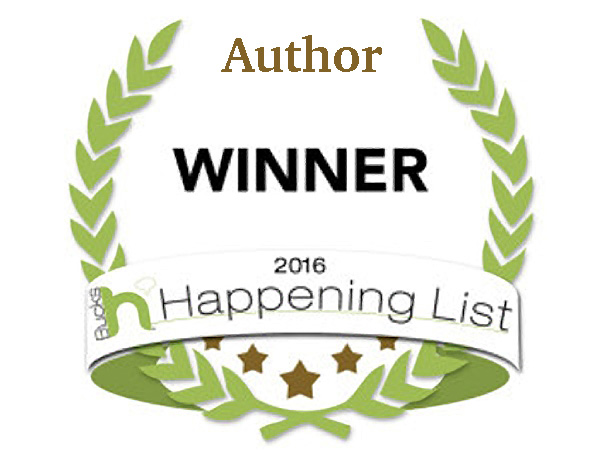



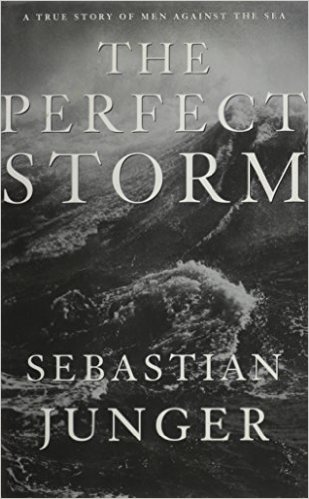
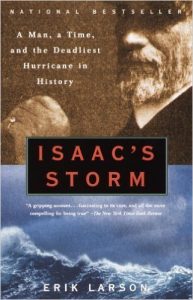






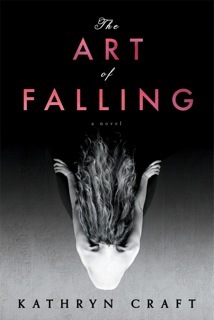
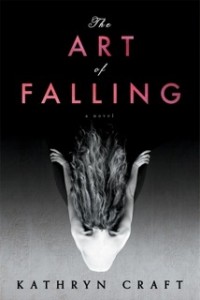

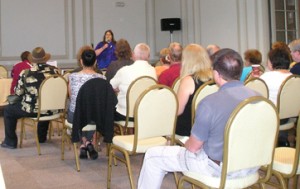
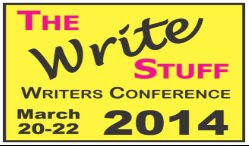
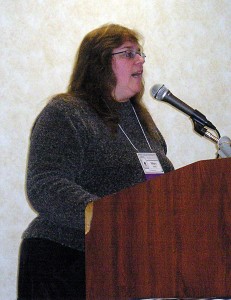

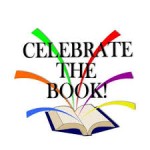
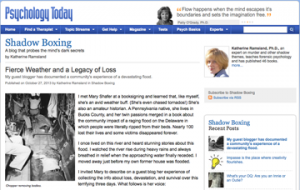

 PILES FOR MILES – Do you REALLY need all that paperwork that’s lying around in piles or stashed away in file drawers? Writers are, by nature, researchers, and that makes us all something of the packrat. But it’s amazing what you can live without if you just devote an afternoon to clearing out what you know you’ll never use again if you’re really honest with yourself. And if you can’t live without it, at least file it where you can actually find it when you need it. If you can’t afford the expense or space of a real filing cabinet, a carton of cardboard filing storage boxes is less than $20 delivered from most major office supply stores. Or, if you’re a visual organizer like I am, those see-through plastic drawer systems are available in either stationary or portable, wheeled “trolley” designs.
PILES FOR MILES – Do you REALLY need all that paperwork that’s lying around in piles or stashed away in file drawers? Writers are, by nature, researchers, and that makes us all something of the packrat. But it’s amazing what you can live without if you just devote an afternoon to clearing out what you know you’ll never use again if you’re really honest with yourself. And if you can’t live without it, at least file it where you can actually find it when you need it. If you can’t afford the expense or space of a real filing cabinet, a carton of cardboard filing storage boxes is less than $20 delivered from most major office supply stores. Or, if you’re a visual organizer like I am, those see-through plastic drawer systems are available in either stationary or portable, wheeled “trolley” designs.